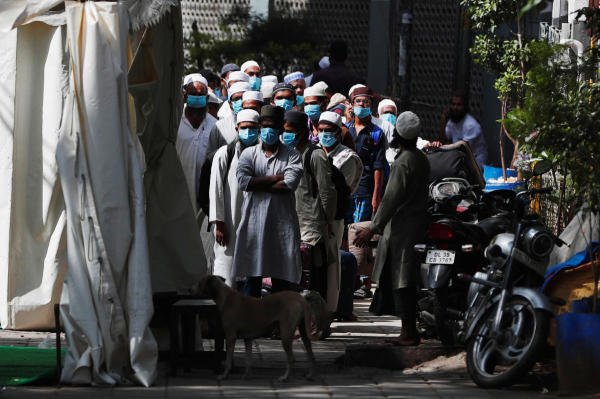Delhi Fire Services personnel sprayed on Thursday thousands of liters of disinfectant in south Delhi’s Nizamuddin in a massive sanitisation drive after over 300 people who visited the area in March for a religious gathering tested positive for the coronavirus disease (Covid-19) in different parts of the country.
The six-storey building of Islamic missionary group Tablighi Jamaat in the congested Nizamuddin area has emerged as a hot spot of the infection, and authorities across states have launched efforts to trace the footprints of the attendees.
DFS director Atul Garg said the department sanitised the Markaz, as the building is known, in Nizamuddin, lanes surrounding the building and other adjoining residential areas.
“We sprayed at least two fire tenders full of disinfectants. One fire tender contains 10,000 litres of water mixed with sodium hypochlorite (liquid bleach). We used two fire tenders…,” he said.
Garg said fire personnel sprayed the disinfectant on shops (which were closed), footpaths, walls, parked vehicles and buildings in the vicinity as well.
On Wednesday, in a meeting with the chief secretary and top bureaucrats in Delhi, lieutenant governor Anil Baijal directed that the fire department be used to disinfect Covid-19 clusters, quarantine centres and vulnerable public places in Delhi.
Health workers from the integrated diseases surveillance programme are also preparing to go door-to-door in the area as they seek to track and contain cases of Covid-19.
On Wednesday, the last of the 2,346 people who had been in the building were evacuated; 536 of them were sent to the hospital and 1,810 placed in quarantine. So far, the March congregation has been identified as being responsible over 358 infections and 11 deaths.
Everyone within a 3km radius (focal area) of the building and in the buffer area (5km radius) will be screened for symptoms. Those who are symptomatic — a cough will do — will be tested. This will entail door-to-door coverage, first in the focal area and then the buffer area.
“The cluster containment strategy has two components: one is to mark the epicentre and the buffer zone where extensive door-to-door surveys will be conducted. We do a complete lockdown in and around the area. The next step is identifying all potential positive cases by going in for aggressive testing. We pick samples from everyone with any respiratory illness in the area,” said a senior technical expert with the Union health ministry who asked not to be named said on Wednesday.




























 WhatsApp us
WhatsApp us